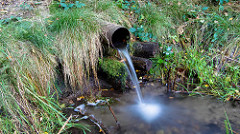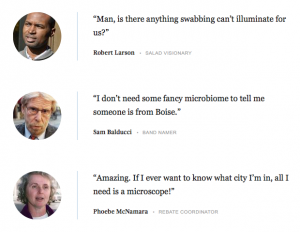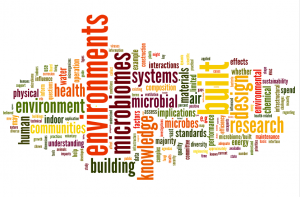New papers on microbes and the built environment. Microbes and fermenting households Samples collected through the Second Annual San Diego Fermentation Festival: From Sample to Multi-Omics Conclusions in under 48 Hours – Robert A. Quinn – mSystems (OA) (…) Here, we applied a novel integrated omics pipeline for the analysis of human and environmental samples in under …
Now that QIIME 2 is officially funded (see my recent announcement here on the American Gut Blog), the Caporaso Lab at Northern Arizona University is hiring a new full-time developer to work on QIIME, scikit-bio, An Introduction to Applied Bioinformatics, and our many on-going microbiome analysis projects. The official job posting is available here, and you can …
Legionellosis has emerged as a major public health threat related to the built environment, and outbreaks of Legionnaires’ disease in New York City and Flint, Michigan in 2015 have drawn increased attention to the problem. Cases reported to CDC have increased more than four-fold since 2000 with over 5000 cases reported in 2015; almost all …
Received an e-mail today from Cameron Turner (@enviroDNA) with information about an upcoming workshop “Understanding the Ecology of Environmental DNA from Diverse Disciplines” to be held at the annual ESA meeting, this year in Fort Lauderdale, FL, August 7-12th. Some information from the e-mail below, also attached is the workshop flier. The workshop is titled …
I have nothing to add to this. The Onion picks up on the recent study by Caporaso and colleagues A study that swabbed office buildings in major cities found that the bacterial profile of the swabs corresponded to their location, suggesting that cities each have their own “bacterial fingerprint.” What do you think? Source: Study: …
Recent papers about microbes and the built environment: Microbes in the house Fungal and Bacterial Communities in Indoor Dust Follow Different Environmental Determinants – Fabian Weikl – PLOS ONE (OA) (…) we wanted to identify key environmental determinants for the house dust microbiome from an existing collection of spatially (area of Munich, Germany) and temporally (301 days) distributed …
(this post was written by group #3 as a writing assignment) After last week, our extracted DNA samples were amplified with PCR and the finished product brought this week to lab for us to purify and prepare for Sanger sequencing. The first step we took this week was to analyze the success of PCR using …
On April 11 there was a meeting in Washington DC that was part of an effort from a new study being conducted by the National Academies of Science, Medicine, and Engineering on “Microbiomes of the Built Environment”. Videos and slides from the meeting have now been posted. I have compiled them below. In addition, I …
The electron microscope facility on campus here at UC Davis has been hosting a tabletop scanning electron microscope for the past two weeks. We were invited to bring samples and test it out, no sample preparation required. And so for fun, I brought in a dust bunny from the floor of my house, where I live …
(this post was written by group #2 as a writing assignment) The goal of this week experiment was to extract genomic DNA from our samples for sequencing. Ultimately, we want to characterize the DNA from samples by sequencing them. However, since our isolates are in small amounts, we need to do an additional step (in …



